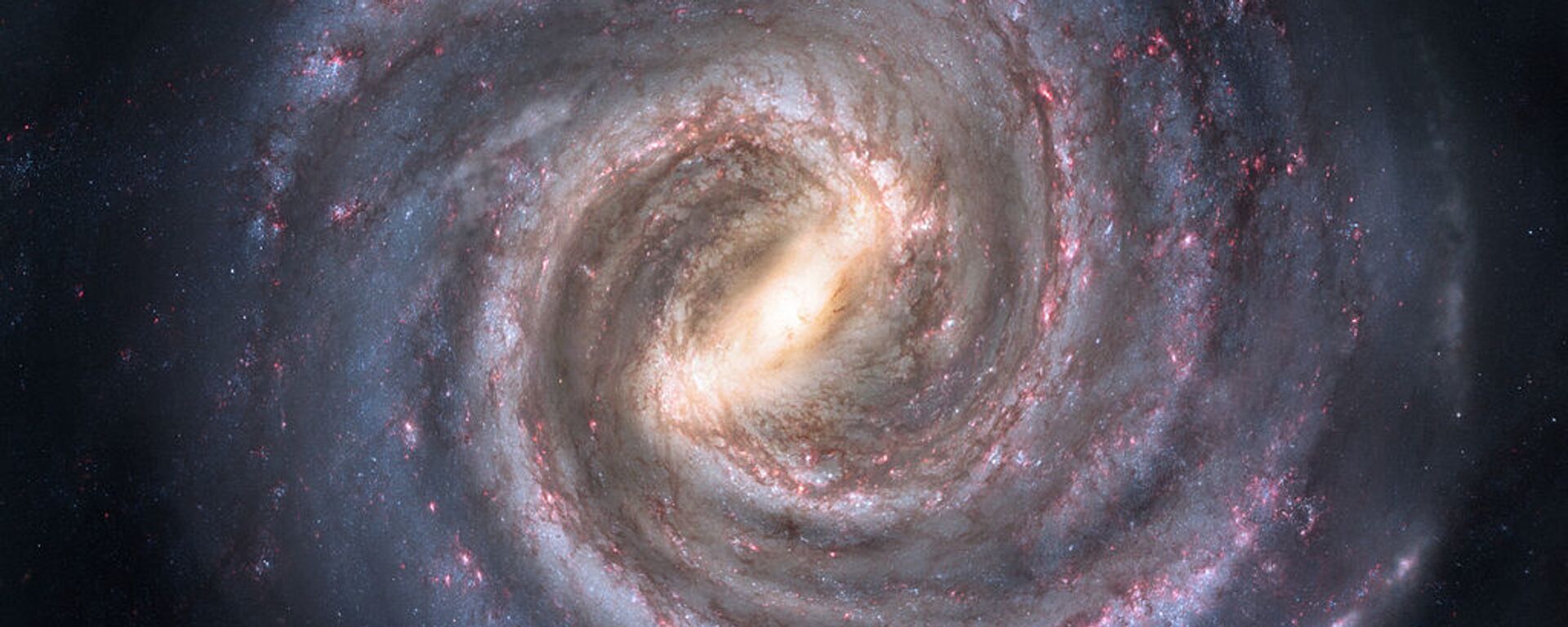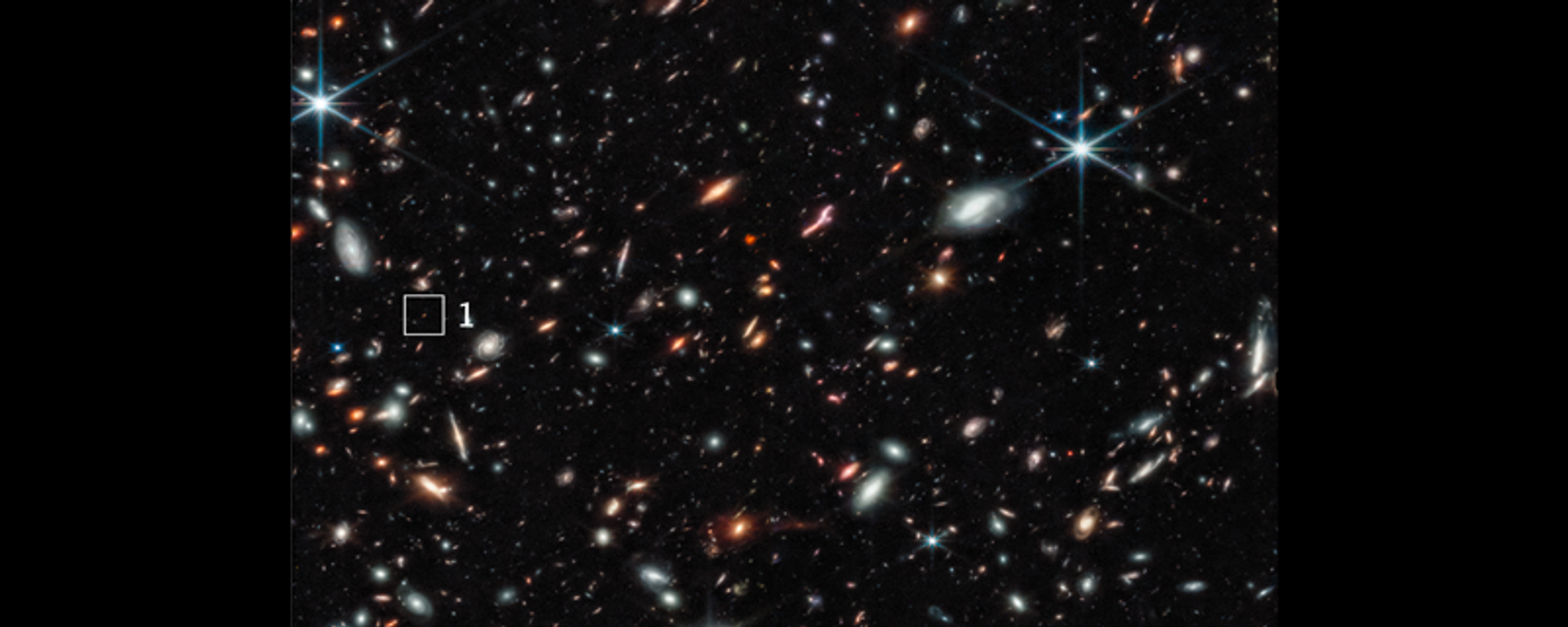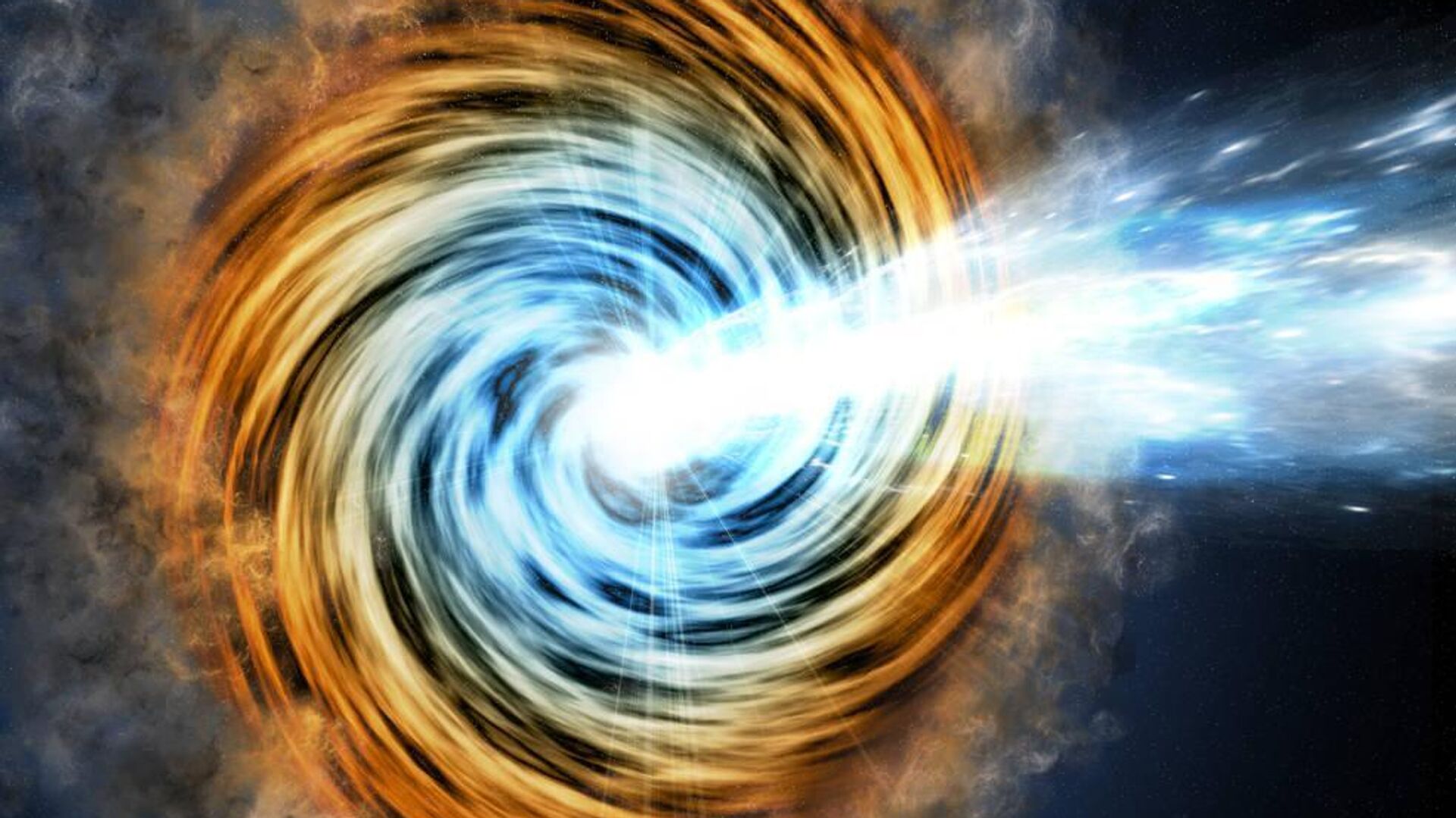https://sputnikglobe.com/20230402/scientists-have-found-newly-formed-blazar-galaxy-that-emits-radiation-in-our-direction-1109046598.html
Scientists Have Found Newly-Formed Blazar Galaxy That Emits Radiation in Our Direction
Scientists Have Found Newly-Formed Blazar Galaxy That Emits Radiation in Our Direction
Sputnik International
Blazars are among the most energetic objects in the universe, and their intense radiation is believed to be produced by these relativistic jets of particles
2023-04-02T10:45+0000
2023-04-02T10:45+0000
2023-04-21T10:43+0000
world
astrophysics
astronomy
research
space
science & tech
https://cdn1.img.sputnikglobe.com/img/07e6/0b/18/1104661603_0:92:985:646_1920x0_80_0_0_0a66d6b770e46ab2e4d37de37007e3bd.jpg
A team of astronomers has discovered an unusual transformation of a galaxy from previously having been a radio galaxy to now becoming a blazar, a type of active galaxy with a supermassive black hole at its center that emits intense radiation.The transformation of the galaxy, named PBC J2333.9-2343, was observed using the Very Long Baseline Array (VLBA), the San Pedro Mártir telescope, and the XMM-Newton observatories. The telescopes in 2009 and 2015 captured the galaxy emitting radiation like a blazar, while it was previously thought that it was a giant radio galaxy, a type that emits just into the plane of the sky. Recent study suggests it has turned almost by 90 degrees in Earth’s direction. It is rare for such significant changes to take place in a human lifetime.Despite blazars ejecting immense amounts of particles, it’s completely safe for people on Earth, as jet lobes of PBC J2333.9-2343 span across 3.9 million light years, which is considered far. However, our Milky Way travels through deep space at a distance of over 650 million light years from the recently reclassified blazar.The transformation of PBC J2333.9-2343 could also provide important insights into the behavior of supermassive black holes and the evolution of active galaxies, as it is the first example of a non-X-shaped radio galaxy changing its jet direction.The discovery of PBC J2333.9-2343 highlights the importance of continued research on active galaxies and the complex processes that govern the behavior of supermassive black holes and their surrounding environments.
https://sputnikglobe.com/20230119/astronomers-detect-9-billion-year-old-signal-from-galaxy-far-far-away-1106480427.html
https://sputnikglobe.com/20230128/astronomers-confirm-detection-of-oldest-galaxy-ever-observed-1106777055.html
Sputnik International
feedback@sputniknews.com
+74956456601
MIA „Rossiya Segodnya“
2023
Sputnik International
feedback@sputniknews.com
+74956456601
MIA „Rossiya Segodnya“
News
en_EN
Sputnik International
feedback@sputniknews.com
+74956456601
MIA „Rossiya Segodnya“
Sputnik International
feedback@sputniknews.com
+74956456601
MIA „Rossiya Segodnya“
space, science, astrophysics, astronomy, distant galaxies, space research
space, science, astrophysics, astronomy, distant galaxies, space research
Scientists Have Found Newly-Formed Blazar Galaxy That Emits Radiation in Our Direction
10:45 GMT 02.04.2023 (Updated: 10:43 GMT 21.04.2023) Blazars are a subset of active galaxies that feature a supermassive black hole at their center radiating powerful jets of particles into space - directly on the observer. They are among the most powerful emissions in the universe, and their intense radiation is believed to be produced by these relativistic jets of particles.
A team of astronomers has discovered an unusual transformation of a galaxy from previously having been a radio galaxy to now becoming a blazar, a type of active galaxy with a supermassive black hole at its center that emits intense radiation.
The transformation of the galaxy, named PBC J2333.9-2343, was observed using the Very Long Baseline Array (VLBA), the San Pedro Mártir telescope, and the XMM-Newton observatories. The telescopes in 2009 and 2015 captured the galaxy
emitting radiation like a blazar, while it was previously thought that it was a giant radio galaxy, a type that emits just into the plane of the sky. Recent study
suggests it has turned almost by 90 degrees in Earth’s direction.
It is rare for such significant changes to take place in a human lifetime.
19 January 2023, 10:26 GMT
Despite blazars ejecting immense amounts of particles, it’s completely safe for people on Earth, as jet lobes of PBC J2333.9-2343 span across 3.9 million light years, which is considered far. However, our Milky Way travels through deep space at a distance of over 650 million light years from the recently reclassified blazar.
"The fact that we see the nucleus is not feeding the lobes anymore means that they are very old. They are the relics of past activity, whereas the structures located closer to the nucleus represent younger and active jets," Dr. Lorena Hernández-García, leading researcher, said.
The transformation of PBC J2333.9-2343 could also provide important insights into the behavior of supermassive black holes and the evolution of active galaxies, as it is the first example of a non-X-shaped radio galaxy changing its jet direction.

28 January 2023, 00:01 GMT
The discovery of PBC J2333.9-2343 highlights the importance of continued research on active galaxies and the complex processes that govern the behavior of supermassive black holes and their surrounding environments.




